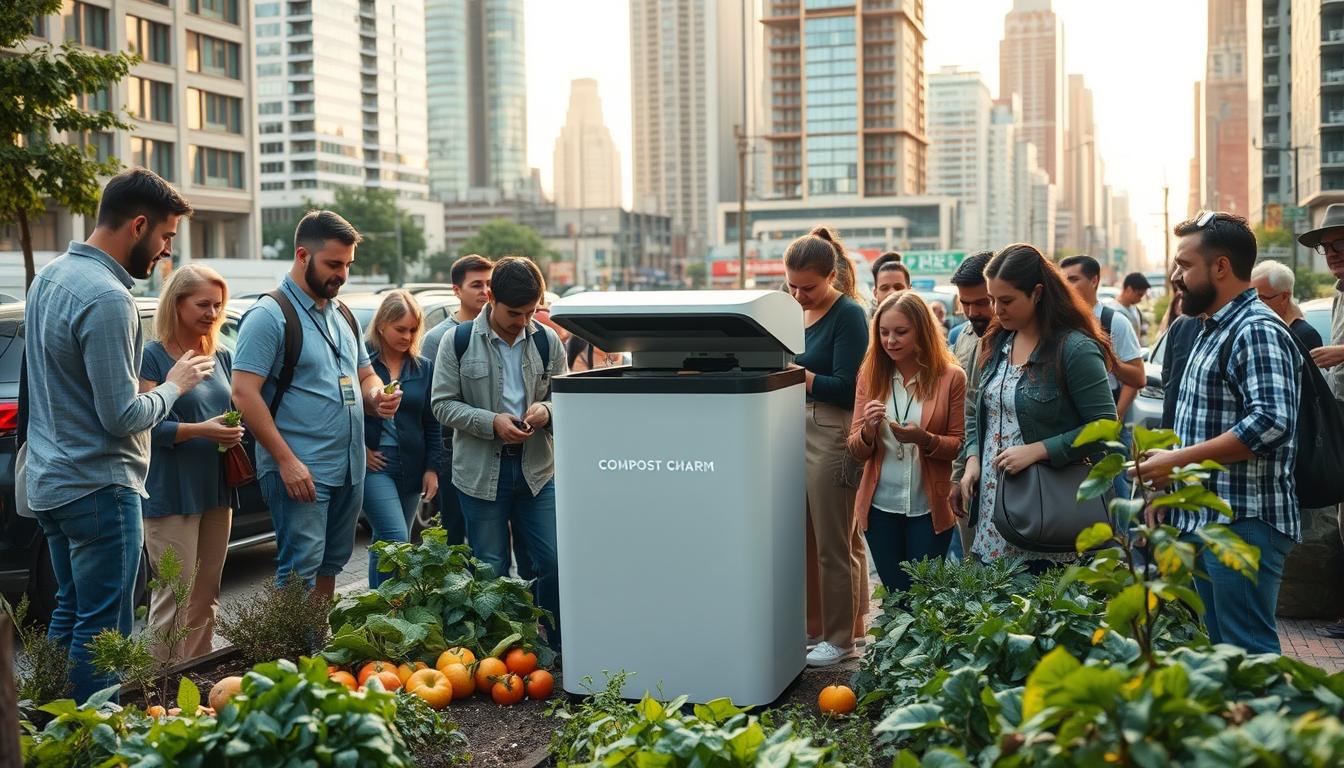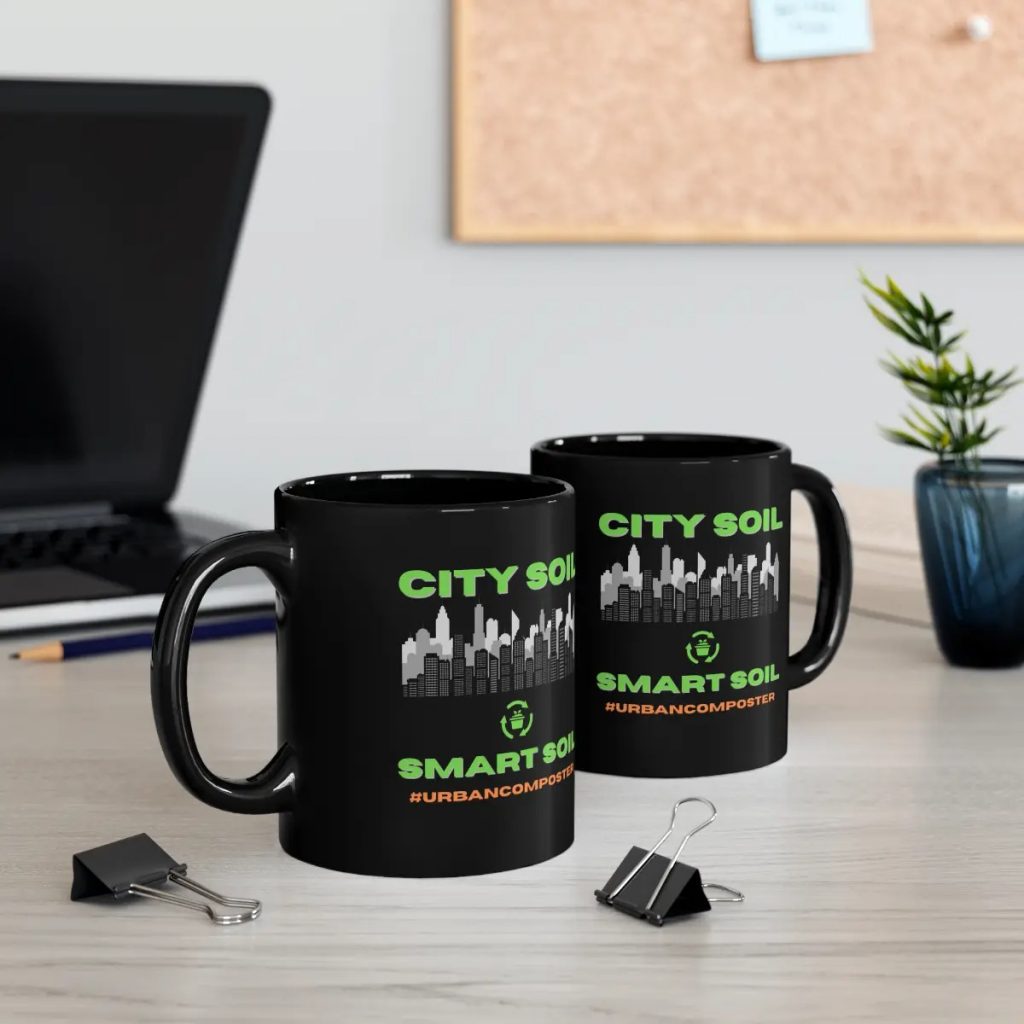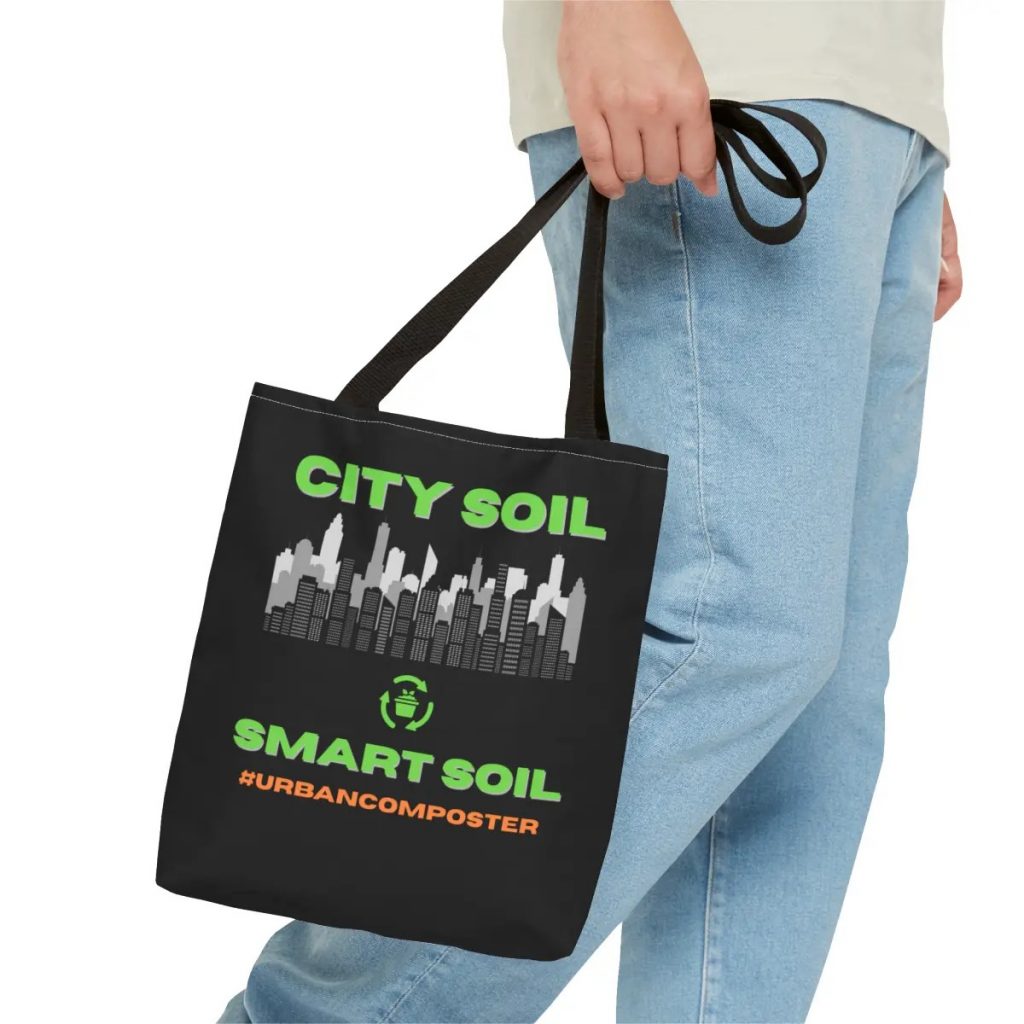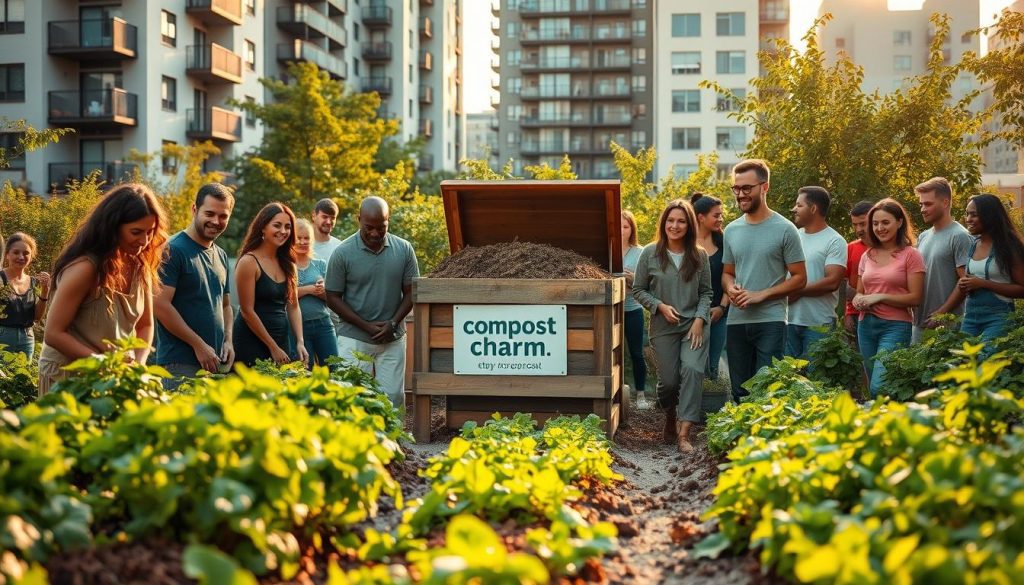Smart composting is now easy in busy cities. Modern machines turn food waste into compost in just 24–48 hours.
They use sensors and AI to control temperature and moisture, making it smell less and pest-free.
Now, even small spaces like apartments and restaurants can compost. Every ton of waste not sent to landfills cuts methane emissions.
Companies like Green Planet Solutions have set up systems in places like Qatar and India, showing it works everywhere.
This guide will show you how to use smart composters in your daily life and city systems.
You’ll learn how to start, why it’s good for the planet and your wallet, and how to pick the right unit for your space.
We aim to make smart composting easy for you to do confidently.
Key Takeaways
- Smart composting uses controlled, fast cycles to turn organics into compost quickly.
- Composting technology reduces landfill methane and can lower waste fees.
- Compact in-vessel systems suit homes, restaurants, and institutions in dense areas.
- Sensors and AI reduce maintenance and control odors and pests.
- Adopting smart composters supports urban composting trends and local sustainability goals.
Introduction: Smart Composters and the Urban Waste Challenge
U.S. cities are growing fast, and waste systems are struggling. More food waste, smaller homes, and strict pickup rules are common.
Smart composters are a solution for dense areas and busy commercial zones.
They help manage waste and ease landfill pressure.
Urban areas generate a lot of organic waste. This adds weight to trash, increases costs, and fills landfills.
Cities with focused programs can cut down on waste and meet green goals sooner.
Food and organic waste do more than just add to trash totals. When they end up in landfills, they break down without oxygen, releasing methane. Methane warms the planet faster than carbon dioxide.
By diverting organics, cities can reduce methane and lessen environmental impact.
Smart composters speed up decomposition in sealed machines. This process is called in-vessel composting.
Inside, temperature, moisture, and odor are monitored. The machine adjusts airflow and turns to keep microbes working well.
At the heart of a modern unit are sensors and software. Temperature probes prevent harmful pathogens and keep the composting process active.
Moisture sensors prevent dry or soggy conditions.
Odor sensors open vents to keep streets and buildings fresh. These features make composting possible in tight spaces like apartments and restaurants.
Cities can follow the Aspire, Adapt, Amplify model to grow their programs. Aspire by setting clear targets for waste diversion.
Adapt operations to local needs, like pickup times or building codes. Amplify by partnering with local government, businesses, and nonprofits to spread the word and increase adoption.
| Challenge | Smart Composter Feature | Result |
|---|---|---|
| Limited space in apartments | Compact in-vessel design with odor control | Greater adoption in multiunit buildings and reduced landfill waste |
| High volumes from restaurants | Automated aeration and rapid cycles | Lower hauling frequency and cost savings |
| Public concern about smells | Odor sensors and sealed containment | Improved public acceptance and reduced urban environment impact |
| Policy gaps and outreach | Data reporting and connectivity for smart city initiatives | Better tracking of diversion goals and program support |
How smart composters are changing urban waste habits
Smart composters are popping up in cities, cafes, and offices. They make composting a local effort.
This reduces transport needs, speeds up processing, and creates soil for parks and gardens.
Adoption trends in urban neighborhoods, businesses, and institutions
Hotels, restaurants, and corporate cafeterias use smart machines to save money and show they care about the planet.
Homes and buildings with small spaces choose units that don’t smell. Schools and city halls use bigger systems for constant recycling.
Behavioral shifts:
from toss-and-forget to source-separation and reuse
People learn to sort food waste at home with the help of clear bins. Training in food service keeps waste clean and boosts recycling.
Simple habits turn kitchen waste into something useful.
Quantified benefits:
reduced landfill tonnage, lower disposal costs, and emissions reductions
Smart composting works fast, often in a day or two, so pickups are less often. Saving one ton of food waste cuts methane emissions a lot.
Restaurants save on hauling costs and see quick returns from composting.
How smart composters work:
technology and mechanisms
Smart composters mix engineering and biology to speed up organic breakdown in cities.
They use enclosed designs to keep pests and odors away. This creates perfect conditions for microbes to work.
The basic control loop is simple and reliable. Sensors collect temperature and moisture data.
AI then analyzes this data and decides what to do next.
Actuators like fans, mixers, and heaters carry out these actions.
This process makes microbes break down organics faster and cleaner.
In-vessel systems keep heat and moisture locked in. This speeds up decomposition in 24–48 hours under the right conditions.
These systems are great for hot climates and dense neighborhoods because they control odors and pests.
Sensors and remote monitoring offer real-time visibility. Temperature probes and moisture sensors send data to cloud dashboards and apps.
This lets operators get alerts if a bin gets too hot or dry.
Remote control makes it easier to manage conditions without visiting every unit.
This is a key feature for smart waste management systems.
AI-driven control optimizes aeration and turning. Algorithms analyze sensor data and adjust cycles to keep microbes active.
Automated fans and mixers reduce manual labor and prevent odors.
Use cases vary by scale. A small café kitchen can use an in-vessel unit. Apartment buildings can have shared systems for tenant use.
Large hotels and municipal facilities use industrial systems for steady volumes.
Urban composting technology now combines hardware, software, and service models.
This lowers barriers for businesses and residents wanting to divert organics.
The result is faster, cleaner composting that fits modern city life and supports local circular economies.
Environmental benefits of urban smart composting

Smart composters are great for city ecosystems. They turn food scraps into compost, helping the environment and reducing waste.
This tech improves soil, cuts emissions, and boosts local plants.
Reducing methane emissions by diverting organics from landfills
Food waste in landfills decomposes without air, releasing methane. Smart composters change this by breaking down waste with oxygen.
This method is key to lowering greenhouse gases in cities.
Soil improvement and urban greening: parks, landscaping, and rooftop gardens
Compost makes soil better for plants, holding water and nutrients. Cities like Phoenix and Doha have used it to improve poor soils.
Parks, trees, and gardens get a boost from compost.
Stronger plants need less water and chemicals. This makes composting a vital part of green cities.
Lower reliance on chemical fertilizers and improved local biodiversity
Compost cuts down on synthetic fertilizers. This reduces harmful runoff and helps pollinators and native plants.
Hotels and cities use compost to increase plant diversity.
Programs like Aspire, Adapt, and Amplify encourage community involvement. Education and success stories inspire more people to recycle and compost.
Smart composters in different urban settings
Smart composters fit many urban areas. They provide effective composting solutions for small spaces and growing waste.
You can find them for kitchens, back-of-house areas, and big municipal yards.
Households and apartment complexes: compact and odor-controlled units
Compact in-vessel machines are great for apartments and small homes. They have sealed designs to keep odors and pests away.
Countertop models make it easy for residents to manage daily food scraps, helping with eco-friendly waste management.
Restaurants, hotels, and cafeterias:
cost savings and sustainability credentials
Food-service places benefit from continuous smart systems. Restaurants and hotels save on hauling fees and show their commitment to sustainability.
Automated aeration and sensors make the process easier for staff.
Corporate campuses and municipal facilities:
ESG and large-scale integration
Large in-vessel systems are perfect for big places like corporate campuses and cities.
Campuses use compost for landscaping and community gardens. Municipal facilities meet waste goals through partnerships and agreements, scaling up composting across neighborhoods.
Choosing the right size is key. Make sure the unit matches your daily waste and have maintenance plans.
Proper placement and agreements make smart composters a reliable part of eco-friendly waste management in cities.
Policy, incentives, and municipal integration
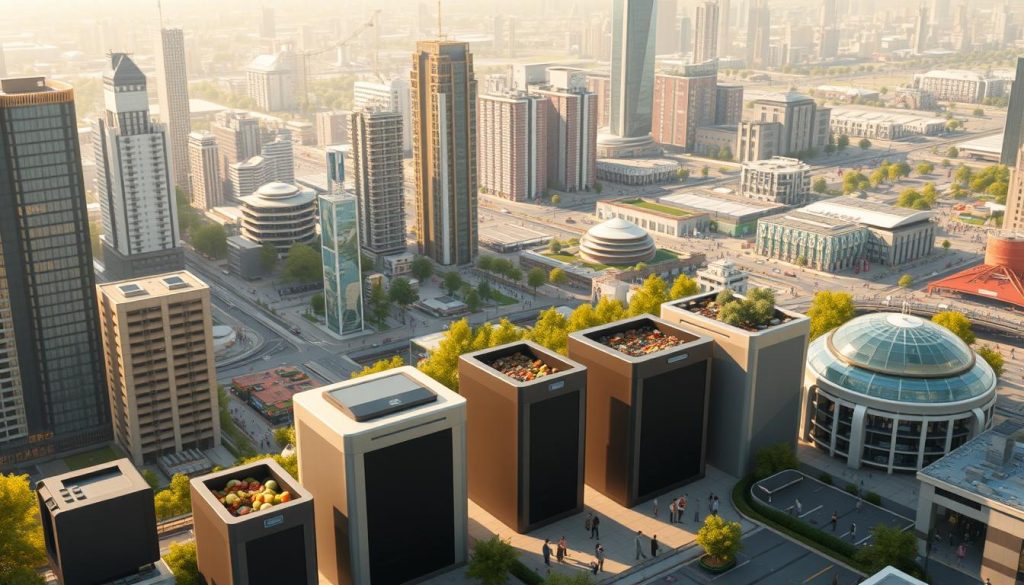
Cities lead the way when they set clear goals and create practical programs. When cities have targets and policies for composting, people are more likely to use smart composters.
The Aspire, Adapt, Amplify framework helps: set targets, tailor pilots, and scale with local partners.
City-level waste diversion goals and composting mandates
Many U.S. cities aim to reduce waste by diverting more organics from landfills.
Having a mandate or ordinance for source separation encourages businesses and buildings to act.
Municipal plans that support composting policies make it easier to get the right systems.
Incentives and public-private partnerships for smart composter rollout
Financial help makes it easier for small businesses and housing to get smart composters.
Grants, rebates, and tax credits cover costs. Public-private partnerships help vendors like CompostTech place units in key locations.
These partnerships work best with training, maintenance, and performance goals.
This ensures quality compost and keeps contamination low.
Targeting high-waste areas with incentives boosts impact.
Integration with curbside collection and urban waste management systems
Smart waste management in cities needs coordination. Smart composting can feed into curbside pickup or act as a local hub.
Sharing routes and schedules with haulers and waste departments reduces contamination and boosts efficiency.
Pilot programs test different approaches. For example, smart composters with curbside pickup match capacity to need.
Sensors and apps help plan routes and investments.
Here’s a quick guide for municipal planners. It shows common incentives, partners, and steps for effective waste solutions.
| Program Element | Typical Incentive | Key Partners | Primary Benefit |
|---|---|---|---|
| Pilot grants | City grant covering 50–75% of the equipment | Municipal staff, local vendors, and universities | Low-risk testing and local data collection |
| Rebates for businesses | Per-unit rebate or tax credit | Chambers of commerce, trade associations | Faster commercial adoption and cost savings |
| Public installations | Leased equipment or co-funding with vendors | Nonprofits, schools, market managers | Community access and education |
| Curbside integration | Operational grants for haulers | Waste haulers, recycling contractors | Streamlined collection and reduced contamination |
| Performance contracts | Outcome-based payments | Private operators, city procurement | Improved compost quality and accountability |
Case studies and real-world examples
Real deployments show how smart systems handle tough conditions and give practical lessons for U.S. cities.
These accounts cover rapid in-vessel performance in hot climates, community engagement boosted by apps and sensors, and commercial facilities cutting costs while boosting sustainability.
Rapid in-vessel composter deployments in hot climates and lessons for U.S. cities
Field projects in places like Doha and Riyadh show that sealed, in-vessel units work well in extreme heat.
They keep microbial activity going, process organics in 24–48 hours, and cut down on odors and pests.
These deployments offer practical takeaways for cities in Arizona, Texas, and Southern California.
Training staff, managing temperatures, and having clear end-use plans help match technology to local needs.
Community composting programs augmented by smart hardware and apps
Neighborhood hubs and municipal pilots use sensors and mobile apps to log contributions and track contamination.
Participants get prompts about what belongs in the bin, which raises turnout and lowers noncompostable waste in the stream.
Smart feedback loops build trust. When people see system health and contributor scores, participation rises.
These community composting programs pair education with data to scale behavior change.
Commercial implementations:
hotels, restaurants, and institutions, lowering waste costs
Hotels and restaurant chains use on-site smart composters to cut tipping fees and show sustainability credentials to guests.
Cafeterias and universities loop compost back into landscaping or donate it, completing a circular waste flow.
Performance metrics from these sites highlight reduced hauling costs and measurable commercial composting success.
Tracking and reporting make it easier to justify capital outlay and ongoing maintenance.
Lessons across projects include piloting for contamination rates, training staff, and identifying reliable end-uses for finished compost.
These steps close the loop and increase the long-term viability of composting technology implementations.
| Use Case | Key Benefit | Typical Time to Process | |
|---|---|---|---|
| Rapid in-vessel in hot climates | Stable operation in extreme heat, low odors | 24–48 hours | |
| Community hubs with smart apps | Higher participation, lower contamination | Variable; ongoing batch cycles | |
| Hotels, restaurants, campuses | Lower disposal costs, stronger sustainability claims | 24–72 hours, depending on the unit | |
| Municipal pilots with sensors | Data-driven scaling and policy support | Dependent on the integration pace |
Practical how-to guidance for adopting smart composters
Starting with a smart composter is easy. First, set clear goals and a plan.
Think about how much waste you make daily, how much space you have, and who will take care of it.
Making small decisions early helps everything run smoothly and gets everyone involved.
Choosing composting units
Choose a composter that fits your needs. For homes, small countertop units like FoodCycler or Lomi work well.
Larger units are best for restaurants and schools, offered by Orgaworld or Green Mountain Technologies.
Make sure to check the size, power needs, and if it works well in warm weather.
Installation of smart composters
Find a spot with good air flow and easy access. Place it near where waste is already thrown away.
Follow the manufacturer’s instructions and register your composter to get warranties and maintenance plans from companies like BioHiTech or HotRot.
Maintenance and troubleshooting basics
Check the temperature and moisture levels every day. Empty the tray and harvest compost regularly.
Clean or replace filters and check seals to avoid bad smells.
If it’s too wet, add dry stuff like shredded paper. For sensor problems, call the vendor or schedule a service visit.
Source-separation guidance
Use bins with different colors and simple labels. Teach everyone how to use them with quick demos and signs.
Set regular collection days and ask people to rinse plastics to keep things clean.
Composting solutions for apartments
In apartments, put machines in shared areas or courtyards. Give out small kitchen caddies and set up a pickup schedule.
Work with managers to include composting in cleaning plans and post instructions in common areas.
Operational tips for businesses
Choose a person to oversee composting and logging. Use apps to track how much waste you’re saving.
Share your progress with employees and customers to show your commitment to sustainability.
By choosing the right composter, installing it well, keeping it up, and teaching people how to use it, you can make smart composters a valuable part of your home, apartment, or business.
Costs, savings, and return on investment
Planning finances for smart composters is straightforward. First, list the initial costs.
Then add the ongoing expenses and compare them with your current waste-disposal bills.
This will give you a clear picture of the ROI composting can offer for your building or business.
Upfront capital and ongoing operating costs
The initial purchase and installation are the biggest expenses for smart composters. Smaller units from companies like Lomi or HotRot are more affordable.
But, larger systems for restaurants and campuses are pricier. Remember to include electricity, maintenance, and occasional parts in your ongoing costs. Don’t forget to add labor for loading and sorting.
Waste hauling savings and compost product value
Smart composters reduce the need for frequent waste pickups. This leads to savings on waste hauling.
It’s a big plus for places like restaurants, hotels, and campuses with lots of organic waste.
The compost you make can be sold or used for landscaping. You can also donate it to community gardens.
Selling compost or using it to reduce soil amendment purchases can boost your bottom line.
This improves the ROI composting calculations.
Grants for composting and sustainable financing
Many U.S. cities offer grants and rebates for composting projects. Look into municipal grants, state sustainability funds, and federal programs like those from the EPA.
Public-private partnerships and green loans also offer financing options.
Cities like San Francisco, Seattle, and Austin have programs to support diversion projects.
Check their websites or sustainability offices for eligibility and application deadlines.
How to calculate payback
To figure out payback, compare your current waste hauling costs to the costs of the composting system.
Include the initial purchase, installation, maintenance, and labor.
Subtract the avoided landfill fees and add any compost revenue or savings on soil amendments.
This will show you when you’ll break even in months or years.
Be conservative when estimating benefits. If you’re too optimistic about revenue or maintenance, your payback period might look better than it really is.
| Item | Small-scale (cafe, 1–2 employees) | Mid-scale (restaurant, hotel) | Large-scale (campus, hospital) |
|---|---|---|---|
| Typical upfront cost | $1,500–$5,000 | $10,000–$50,000 | $75,000–$300,000 |
| Annual operating cost | $500–$1,500 | $3,000–$10,000 | $10,000–$40,000 |
| Estimated annual waste hauling savings | $600–$2,000 | $5,000–$20,000 | $20,000–$100,000 |
| Potential compost value/revenue | $200–$1,000 | $1,000–$10,000 | $5,000–$50,000 |
| Common financing options | Local rebates, small business loans | Municipal grants, equipment leases | Public-private financing, green bonds |
| Typical payback period | 1–4 years | 1–3 years | 2–6 years |
Start with a simple spreadsheet. List your current waste hauling costs, expected savings, compost revenue, and all expenses.
This will help you see the path to sustainable financing and the real costs of smart composters for your site.
Barriers, challenges, and how to overcome them
Urban composting has big hurdles to clear. People worry about smells, pests, and space.
They also doubt whether compost is clean. Overcoming these fears is key to making composting a success.
Pest control composting starts with smart design. In-vessel units keep pests and smells out.
Using the right mix of materials and avoiding certain foods helps too.
Showing success wins over the public. Share how composting cuts emissions and saves money.
Make education a big part of your efforts. Use clear signs, hands-on training, and feedback to build trust.
Keeping compost clean is simple. Use color-coded bins and checklists. Smart units can guide users. Regular checks and feedback help keep it clean.
Space and weather can be a problem. But there are solutions like compact systems and machines for different climates.
Even in hot places, the right system can work.
For lasting success, use a mix of strategies. Work with local leaders and offer maintenance plans. Teach people what to compost and why it’s important.
Success depends on being open. Share how many people are participating and how clean the compost is.
Use this data to build support and show your project’s value.
FAQ
What is a smart composter and how does it differ from traditional composting?
A smart composter is a closed system that uses sensors and AI to control temperature and moisture. It’s different from traditional composting, which often relies on manual turning.
Smart composters can process waste quickly, reducing odors and pests.
Why should cities and businesses consider smart composters?
Smart composters help reduce waste in landfills, cutting down methane emissions. They save money on disposal costs for businesses like restaurants.
Cities can meet waste reduction goals and create compost for parks and trees.
How do smart composters reduce greenhouse gas emissions?
By keeping waste out of landfills, smart composters prevent methane production. This reduces climate impact.
They also minimize harmful gases and odors compared to unmanaged waste.
What does “in-vessel” mean and why is it important for urban use?
“In-vessel” means composting happens inside a sealed container. This is key in cities because it controls odors and pests.
It also allows for precise control of the composting process, making it ideal for urban areas.
How does the technology control the composting process?
Sensors monitor temperature, moisture, and odor levels. The system uses AI to decide on actions like turning or heating.
Actuators then carry out these actions, ensuring efficient composting.
What sizes and types of smart composters are available for urban users?
There are compact units for homes and larger machines for businesses. Choose based on your waste volume.
Small units are for household scraps, while larger ones handle more waste.
Can smart composters handle meat, dairy, and oily foods?
Yes, some larger systems can handle these items. But smaller units might not.
Always follow the manufacturer’s advice to avoid problems.
How much space and utilities do these machines need?
Space needs vary by model. Compact units fit small spaces, while larger ones need a utility area.
Most require standard power and occasional water access.
What maintenance and troubleshooting should users expect?
Regular tasks include cleaning and checking sensor readings. Common issues are moisture problems or minor odors.
Many vendors offer maintenance contracts and remote help.
How do you set up source-separation and reduce contamination?
Use clear bins and provide training. Create simple rules for what goes into organics streams.
For multiunit buildings, centralize collection or install a shared unit. Feedback and audits help reduce contamination.
What are the typical costs and potentially savings?
Smart composters have upfront costs and some ongoing expenses. Savings come from reduced hauling and lower tipping fees.
Use the compost or sell it to offset costs. Compare current disposal costs to total costs of the composter.
Are there grants, rebates, or financing options to help with the purchase?
Yes, many programs offer grants and rebates for organic diversion. Look for public-private financing and pilot funds.
Use Aspire, Adapt, and Amplify to find funding opportunities.
How do smart composters fit into city waste management systems?
Smart composters work with curbside collection and municipal composting. They can be placed in community centers or schools.
Integration involves partnerships and education to maintain quality.
What are the environmental benefits beyond methane reduction?
Finished compost improves soil health and retains water. It returns nutrients to urban soils, benefiting parks and gardens.
This supports biodiversity and reduces chemical fertilizer use.
Can smart composters operate in extreme climates?
Yes, modern units work in hot-arid regions like Qatar. Choose a unit rated for your climate.
Look for insulation, cooling, or heating features as needed.
How can cities encourage adoption and scale smart composting?
Set diversion goals and offer incentives. Run pilot programs and partner with vendors.
Use Aspire, Adapt, and Amplify to scale up. Share pilot results and metrics to build support.
What are common barriers, and how are they overcome?
Common barriers include contamination and upfront cost. Overcome them with education, sealed systems, and maintenance plans. Pilot programs and incentives can also help.
How quickly do smart composters process waste, and what happens to the compost?
Processing time is 24–48 hours for the active phase. Curing may follow. Finished compost can be used for landscaping or sold, creating value for local projects.
Who should I contact to pilot or buy a smart composter?
Contact reputable vendors for site assessments and maintenance plans.
For municipal programs, work with local waste management departments. Vendors can help estimate needs and ROI.
Conclusion
Smart composting machines are changing how cities deal with organic waste. They turn food scraps into compost fast, reduce methane, and save money.
These systems work in homes, restaurants, and city facilities, helping the environment and the economy.
To make a big difference, follow a simple plan: Aspire, Adapt, Amplify.
Set goals for reducing waste, make programs fit local needs, and work with groups and companies like BioHiTech or ExakTime.
Education and testing help communities embrace green initiatives.
New tech like sensors, AI, and control systems make these machines reliable.
You’ll see real benefits: less waste in landfills, healthier soil for parks, and better city budgets.
Start pilots, look for funding, and share success stories to keep cities green.

